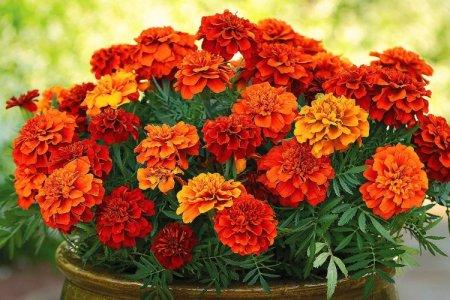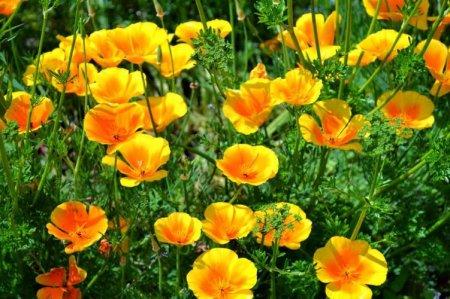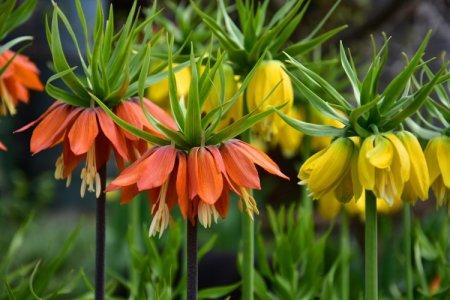
African chamomile, Cape daisy - as soon as they do not call osteospermum. And all these names are not far from the truth, because its inflorescences really look like chamomile we are used to, only with a touch of exoticism. Let's tell and show in more detail!
general information
Osteospermum is a very diverse genus, which includes very herbaceous species and shrubs. They belong to the Asters, and came to us straight from the African continent. In colder climates, osteospermum is grown as an annual. And this is a wonderful decoration for your garden.
Osteospermum blooms in the middle of summer and stops only in the second half of autumn. The average height is about 1 m, but it is impossible to state unequivocally here, because there are too many different varieties. Osteospermum leaves are jagged, but uneven, which makes them look doubly unusual.
The bright flowers are actually basket inflorescences. The diameter can vary from 4 to 11 cm, and the most common shades are white, pink, crimson, purple, yellow and orange. Another amazing feature is that the seeds are formed on the petals, and not in the middle.

Osteospermum types
In nature, there are about 50 types of osteospermum, but not all of them are cultivated in the regions of Russia. Here are the varieties you should look out for!
Osteospermum Ecklona
A very diverse category, which includes both almost creeping bushes and tall spreading varieties up to 1.5 m. In most cases, white petals with pink veins diverge from the red or purple center.

Osteospermum is pleasant
A very beautiful decorative variety with spectacular volumetric inflorescences from several rows of petals. On the basis of this species, garden hybrids have been bred that can change color.

Shrub osteospermum
The creeping shoots quickly grow into a large flowering carpet. These are mainly white, lilac and red varieties, but the shape and size of the flowers may differ.

Osteospermum is noticeable
In its native Africa, it is a perennial that blooms almost all year round. Even here, its petals of an unusual pink shade delight during the entire warm season.

Osteospermum hybrid
An extensive category, which includes all the most interesting developments by the breeder. Often they are better adapted to different weather conditions, and even more decorative.

Osteospermum care
As for an exotic African plant, osteospermum is quite unpretentious. It adapts well to our conditions and feels great with minimal maintenance.
Temperature
Osteospermum perfectly tolerates heat, so even the hottest Russian summer is quite comfortable for him. At the same time, it can withstand short nighttime cold snaps, and even light frosts, which allows it to bloom until severe cold weather.

Lighting
Osteospermum needs bright sunlight, and it's not for nothing that it comes from Africa. It even tolerates direct sunlight. But the shadow will not destroy the plant, but the flowering will be much poorer.

Watering
Osteospermum disgustingly tolerates high humidity, as a guest of their dry regions. The flowerbed does not need to be constantly watered. Accurate and moderate watering is only needed during prolonged drought.

The soil
Soil of any density is suitable, but air-permeable loose soil is still preferable. It is desirable - slightly acidic or neutral, but we advise you to avoid alkaline.

Fertilizers and feeding
For lush flowering, osteospermum needs regular feeding with complex fertilizers. It is advisable to add them every 2-3 weeks, but at the same time in a small dosage - half the norm.

Wintering
In general, in our latitudes, osteospermum is an annual, and it dies along with frost. But you can dig up the plant in the fall, without waiting for the cold weather, and move it to a pot in a cool room. So it will continue to bloom.

Planting and breeding
Osteospermum is propagated by seeds, and even a beginner can handle it. Plant in regular containers with peat closer to mid-spring, gently deepen with a toothpick and leave warm at 20 degrees. In a week, shoots will appear, and you can rearrange the container closer to the sun.
Unlike many flowering plants, it is best not to soak osteospermum seeds before planting. It is enough to leave them in a damp cloth for a couple of hours. Saplings can be dived as needed, when at least 2-3 adult leaves appear on them.
If you have tall varieties, we advise you to pinch the top a little so that the plant grows faster and then blooms more luxuriantly. Gradually harden the seedlings on the balcony, and by the end of spring transplant into open ground at a distance of 20-25 cm from each other.

Pest and disease control
Osteospermum is fantastically resistant to pests and infections. The main problems arise only if the plant is regularly flooded. Then the roots begin to rot, and the flower itself suffers from the fungus. Severely damaged osteospermums will most likely have to be destroyed. In the early stages, simply reduce watering, remove any diseased areas, and use fungicides.

Osteospermum - photo
For all the simplicity of the inflorescences and colors, the carpet of these African daisies looks simply luxurious. Just look!




























